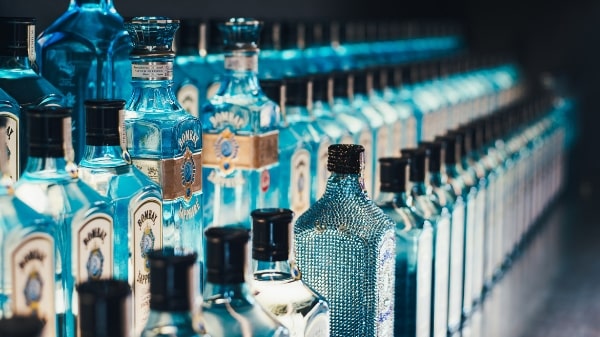Forget any notion you had that Britain is a nation of tea addicts. As any true anglophile will tell you, it’s actually gin that flows in the veins of every true English man and woman. The Brits first succumbed to the allure of gin during the Thirty Years’ War, a prolonged 17th-century skirmish where they witnessed their Dutch allies knocking back Jenever (a rudimentary gin) to calm their pre-battle nerves – a practice that gave the world the term ‘Dutch courage’. It also gave the English a taste for gin, with their habitual indulgence in the spirit something they took back home with them.

It has to be said, the pairing of the legendarily thirsty Brits with this juniper berry-flavoured spirit has not always been a happy one. In the mid-18th century, for instance, the drink was warily referred to as ‘mother’s ruin’, a testament to its detrimental effect on the ladyfolk of the day. Later, when it was heavily taxed in a bid to deter overindulgence, London’s libation lovers rose up in protest. None of these delinquent incidents, however, diminished the nation’s love for its adopted tipple and, as the British Empire expanded across the globe, gin arrived in every annexed territory.
Then, as now, the most popular way to enjoy gin was by mixing it with tonic, a combination supposedly potent enough to ward off malaria, even in the depths of the Indian subcontinent. Indeed, it is not too much of a stretch to say that gin and tonic fuelled the growth of the British Empire. Acknowledging this, Winston Churchill, the legendary prime minister who steered the UK through WWII, was once heard to say: “Gin and tonic has saved more Englishmen’s lives and minds than all the doctors in the British Empire.”

Today, while the empire is long gone, the gin and tonic continues to reign supreme. No longer a medicinal tipple sipped throughout tropical postings, it is now a staple at bars and clubs from the swankiest to the mankiest, from London to Los Angeles, and at every stop in between. Although briefly eclipsed by vodka in the ’70s and ’80s, it has long regained its place at the top of the tippling table, with the introduction of trendy artisanal gins and its adoption as a cocktail essential seeing generation after generation enamoured by its chilled-out charm.
In many ways, it is its chameleon-like qualities that have ensured its lasting success. Its mild flavours, for instance, make it a welcome addition to just about any cocktail, with only a few millilitres of gin enough to give any libation an added zing. What’s more, gin’s largely neutral flavour can easily be transformed by the judicious addition of botanical infusions. While orange, lavender and vanilla pods remain the most popular options, more and more bars are coming up with their own bespoke infusions.

One local quaffery looking to take a lead on this particular front is the TST-based Stable Bar. Set within the venerable precincts of House 1881, it divides its choice of infusions into fruity, floral, spicy and refreshing, with the more exotic options on offer being Sichuan pepper, chamomile, caramel and lemongrass.
Assistant Manager Tony Ng, however, warns against adding too many flavours, saying: “We recommend a maximum of three to four botanicals per drink, otherwise it can be a real assault on the senses.” Depending on your choice of herbs, the colour of your drink is also likely to be transformed, with lavender adding a purple hue and caramel occasioning a mellow yellow tone. First-timers, however, are best advised to stick to a flavourful and foolproof combination of lime, cucumber and orange, while those who want to be more experimental can ginsplice away to their heart’s content.
Grapefruit and Ginger-Infused Gin
Ingredients
1 red grapefruit
2 one-inch slices of ginger
15g sugar
350ml gin
Instructions
- Peel the zest off the grapefruit. Halve the grapefruit and squeeze out its juice
- Place the peel, juice, ginger and sugar in an airtight jar. Pour the gin into the jar and seal it
- Store in a cool, dark place for a week or two, gently swirling the jar every couple of days to dissolve the sugar
- Strain the gin into a jug through a sieve lined with muslin. Serve with zest of grapefruit and ice

Text: Suchetana Mukhopadhyay



